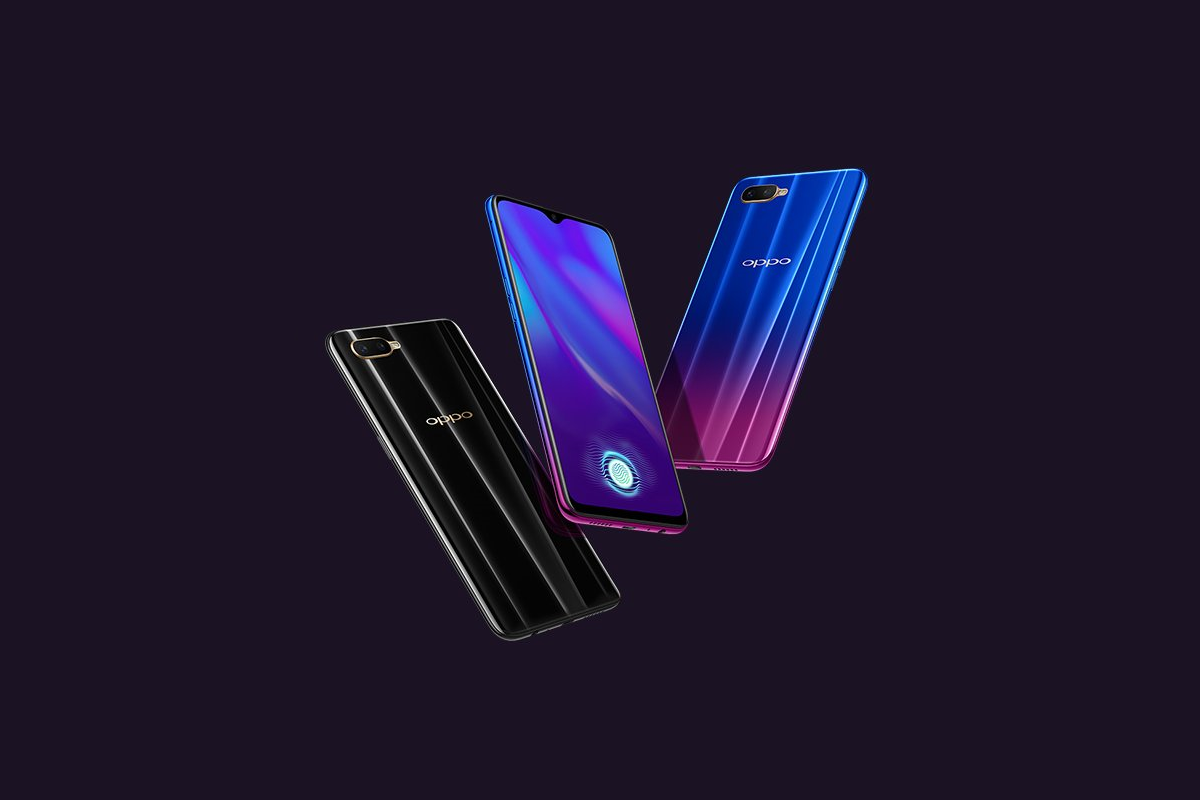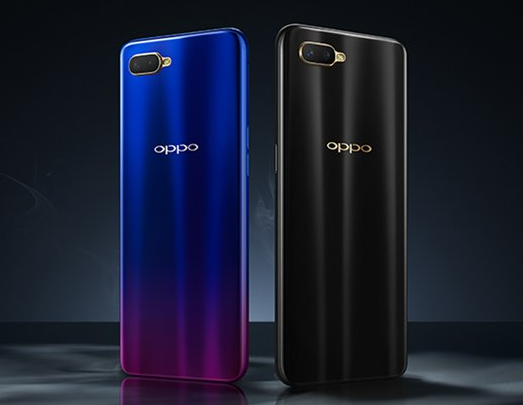The budget and early-mid range segment of the Indian market has been dominated by the likes of Xiaomi, Oppo, Vivo and Samsung, all of whom frequently release new phones to retain their presence in the market. Oppo has now launched the first phone in its K-series in India, bringing together features like an in-display fingerprint sensor and a Qualcomm Snapdragon 660 SoC via the new Oppo K1.
Oppo K1 - Specifications
|
Feature |
Oppo K1 |
|---|---|
|
Display |
6.4" FHD+ AMOLED display with waterdrop notch, 19.5:9 aspect ratio, 91% screen-to-body ratio;Corning Gorilla Glass 5 |
|
Dimensions and Weight |
158.3 x 75.5 x 7.4 mm;156g |
|
SoC |
Qualcomm Snapdragon 660 SoC with 8x Kryo 260 clocked at up to 2GHz, 14nm process;Adreno 512 GPU |
|
RAM and Storage |
4GB + 64GB |
|
MicroSD Expandability |
Up to 256GB through dedicated slot |
|
USB |
microUSB |
|
Fingerprint Sensor |
In-Display |
|
Battery |
3,500 mAh |
|
3.5mm Headphone Jack |
Yes |
|
SIM |
Dual Nano SIMs |
|
Rear Camera |
16MP, f/1.75, 1.12µm, Sony IMX 398;2MP, f/2.4 |
|
Front Camera |
25MP, f/2.0 |
|
Android Version |
Color OS 5.2 based on Android 8.1 Oreo |
|
Pricing and Availability |
₹16,990 (~$237);Available on Flipkart from 12th February, 2019 |
The Oppo K1 comes with a beautiful gradient design on the back, which coupled with the classic glass and metal build and a thin profile, gives it a premium look. The Astral Blue color variant starts off with a blue color on the top and ends with a purple shade, while the Piano Black color variant does not appear to have a prominent gradient. We have seen gradient color patterns in other smartphones, but most of those phones came with a much higher price tag or compromised on the feature set. The phone also comes with a 6.4" AMOLED display with a high screen-to-body ratio and a waterdrop notch. The device also incorporates an in-display fingerprint sensor. The Oppo K1 manages to balance looks, features and the price tag, which is indeed a rare combination.
The Oppo K1 comes with a Qualcomm Snapdragon 660 SoC. This gives it an edge over the Qualcomm Snapdragon 636 present on the Xiaomi Redmi Note 6 Pro, but matches the Xiaomi Redmi Note 7 (which hasn't been released in India yet). So for the time being, the Oppo K1 comes out as the superior option in performance despite the slightly increased price tag over the current competition.
We are disappointed with the inclusion of a microUSB port on the device. A mid-range device in early 2019 with features like an in-display fingerprint scanner should not come with this relic of the past, and we would have preferred a USB Type-C port even with a small price bump. There was no mention of fast charging in the official product pages.
The Oppo K1 includes AI capabilities on the front and rear camera, because marketing a phone with buzzwords is important. The front camera uses AI Beauty Algorithms, while the rear camera offers AI Portrait Mode with a depth-of-field effect.
The phone comes with Oppo's Color OS 5.2 based on Android 8.1 Oreo. The custom UX skin from Oppo incorporates features such as a Smart Sidebar that allows for seamless switching between different apps, and floating multi-window functionality (which was very briefly mentioned during the product launch).
The Oppo K1 goes on sale in India from 12 noon, February 12, 2019 through Flipkart in Piano Black and Astral Blue colors, for a price of ₹16,990 (~$237). Launch offers include no-cost EMI options for 3 and 6 months, an additional 10% instant discount when purchasing through Citi Bank credit and debit cards. Oppo and Flipkart are also guaranteeing a 90% buyback value at an additional nominal cost of ₹1, though we expect this offer to have some substantial Terms and Conditions to be fully complied with.
The Oppo K1 manages to cram a lot of current generation specifications into an attractive price range. It manages to keep other OEMs such as Xiaomi and Samsung on their toes, as the device does have the capability to satiate the needs of the average consumer. Even if the phone may not be personally interesting to the average XDA reader, it does benefit us by forcing the competition to react with better products and value.
What are your thoughts on the Oppo K1? Let us know in the comments below!


